Newsletter: A show of Chicano art tells a story behind the story at La Plaza de Cultura y Artes
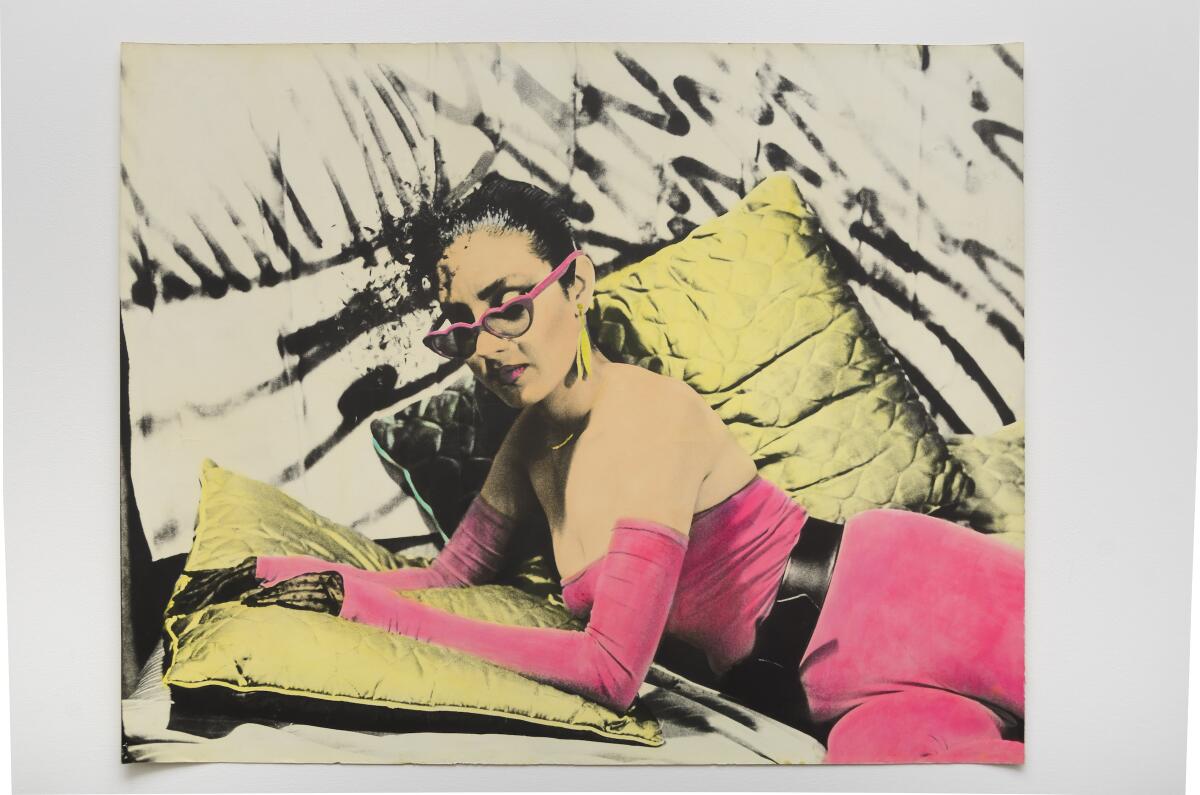
SAN FRANCISCO — Greetings from the Bay Area, where I’m marinating in pisco punch and cool temperatures. I’m Carolina A. Miranda, arts and urban design columnist at the Los Angeles Times, and I’m always here for happy hour and some essential arts news:
Creative foundations
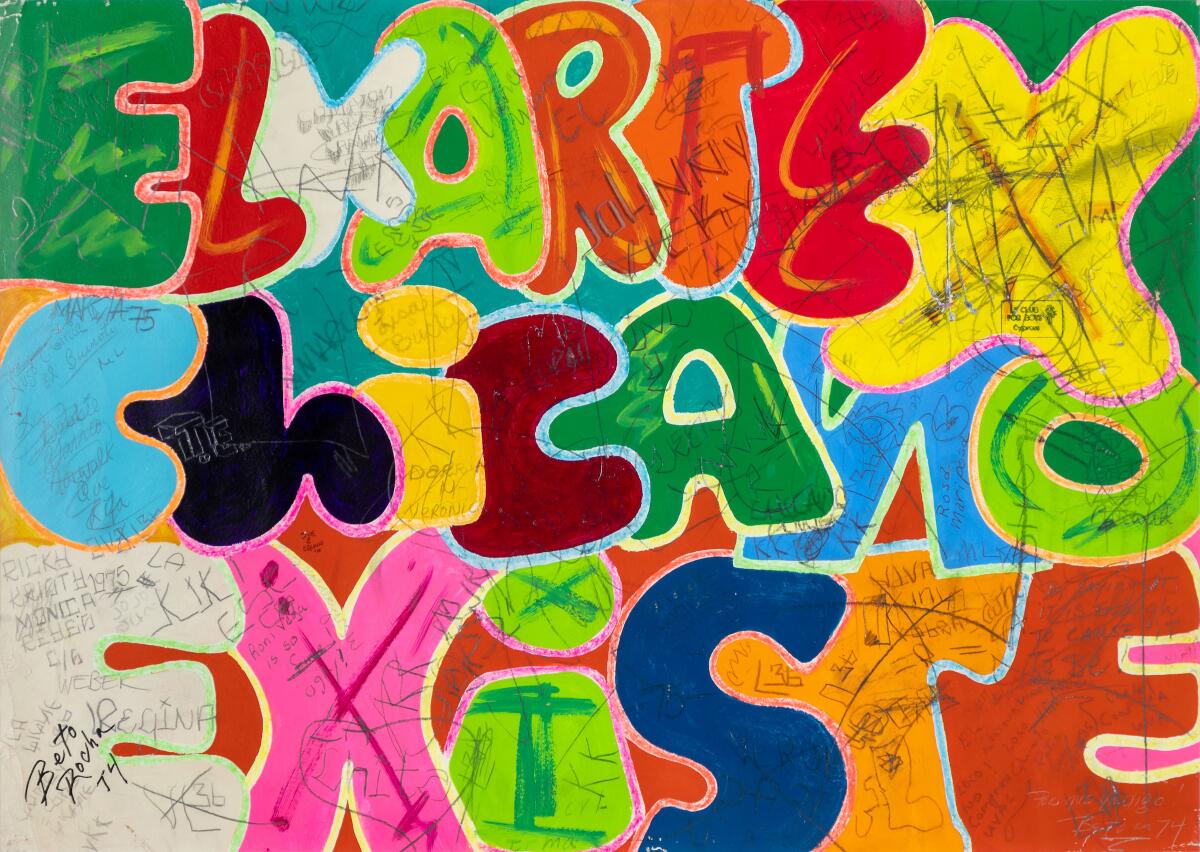
I recently found myself lost in a map. Not a literal one, but a mental one. The map I’m referring to is a 1980 painting by Carlos Almaraz, titled “L.A. Memo,” that features elements of a city’s landscape — palm trees, pulsing skies and pyramidal structures whose functions remain inscrutable — arranged around a horizontal canvas like some sort of painted collage. (The piece is fabricated with pastels on paper.) Here you’ll find a shadowy figure under an umbrella; there, you’ll see an illuminated doorway. And emerging toward the center of a canvas is the artist’s foot.
This dreamlike gathering of images was inspired, in part, by a 1938 work by Frida Kahlo titled “What the Water Gave Me.” That painting shows a bath scene from the artist’s perspective, her scarred feet emerging from water that bears scenes from her life: her parents, a dress, her devastated body, the Empire State Building being consumed by a volcano. Almaraz very broadly borrows the concept for his feverish view of Los Angeles.
The painting lends its name to the intriguing group show “L.A. Memo: Chicana/o Art From 1972-1989,” now in its final days at LA Plaza de Cultura y Artes in downtown L.A. The show is principally drawn from the collection of art owned by the AltaMed Foundation and was organized by Rafael Barrientos Martínez, who serves as a curatorial assistant there. (AltaMed, which provides healthcare in underserved communities around Southern California, features art in all of its clinics. Over the decades, it has built up an impressive collection of work.)
Make the most of L.A.
Get our guide to events and happenings in the SoCal arts scene. In your inbox once a week.
You may occasionally receive promotional content from the Los Angeles Times.
“L.A. Memo” is not a greatest hits show — though these are acknowledged. (Included in the mix, for example, are some of Judy Baca’s pachuca images, as well as photographs capturing noteworthy performances by the collective Asco.) Instead, many pieces speak to the processes behind well-known works from the ’70s and ’80s. This includes one of painter Judithe Hernández’s original preparatory drawings for “Recuerdos de Ayer, Sueños de Mañana,” the downtown mural she created to mark L.A.’s bicentennial.
Also on view are paintings, prints and sketches by other well-known muralists, such as David Botello and Eloy Torrez, whose massive mural of actor Anthony Quinn still graces the old Victor Clothing Co. building in downtown. (“L.A. Memo” features a painting inspired by that ebullient mural, which was restored half a dozen years ago.)
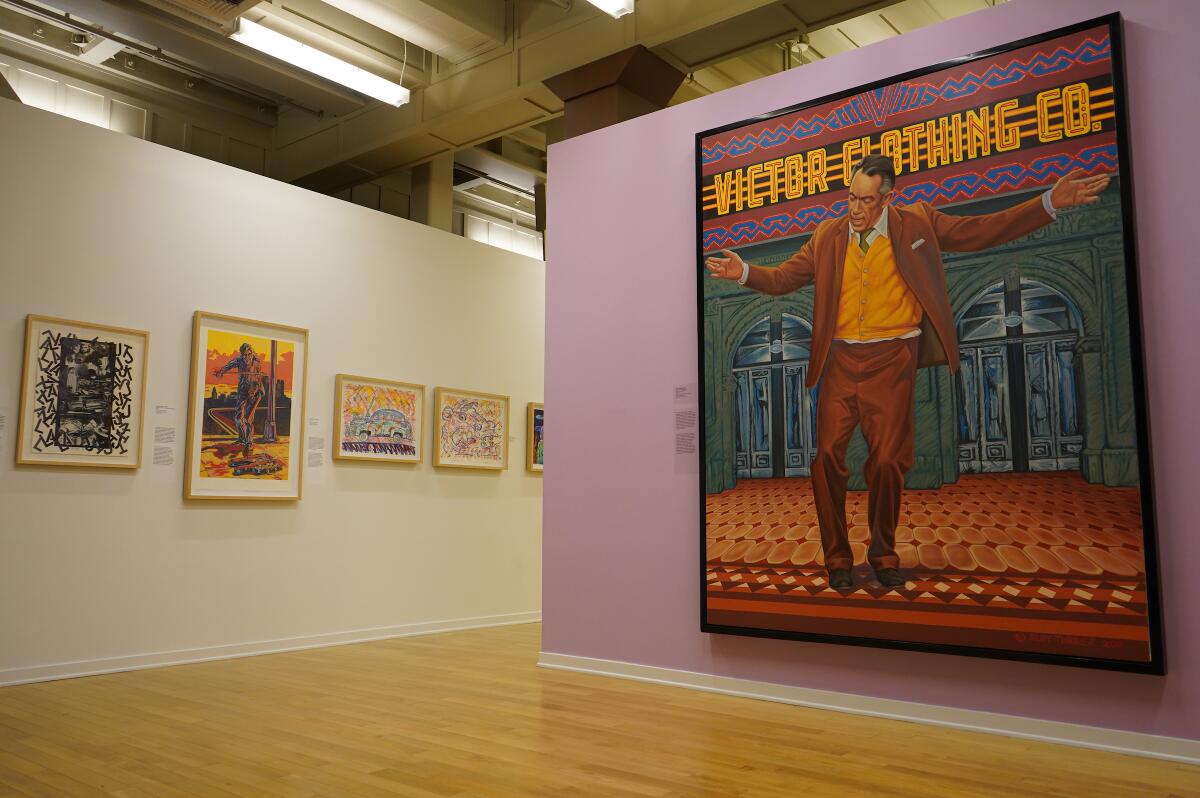
What makes the show truly worthwhile, however, are the lesser-known pieces that give contour to the story of Chicano art.
This includes striking printed self-portraits by Diane Gamboa and Barbara Carrasco, as well as a photograph by Harry Gamboa Jr. (brother of Diane) titled “Iris Crisis,” from 1982, in which he obliterates his body and visage with pieces of paper.
Also intriguing are works by Teddy Sandoval that explore queerness, gender play and bodily ideals around the male physique, as well as a series of collages from the 1970s by Joey Terrill that take lyrics from Latin American songs and evoke them with images that elicit gay male desire. Terrill’s work has been materializing in many places as of late: in the triennial exhibition organized by El Museo del Barrio in New York two years ago and in a small solo show at Park View / Paul Soto in L.A. early this spring. A beguiling painted collage by the artist currently dominates the first gallery in the group show “Rostro” at Charlie James Gallery. The collages on view in “L.A. Memo” are yet more evidence that Terrill is wildly overdue for a thoughtful museum survey.
Also overdue: an examination of Patssi Valdez’s photographic works, which were created independently of her work with Asco. (She was a founding member of the collective but too often, in the retelling of that group’s history, gets relegated to the role of muse.) “L.A. Memo” opens with a painted photograph by the artist titled “Pillow Talk (Betti Salas),” created sometime around 1979 or ’80. It shows a woman in a pink bodysuit and sunglasses perched on a divan, assertively meeting the viewer’s gaze.
Also on view is a guerrilla music video that Valdez created to accompany Devo’s “Whip It.” In it, figures in mod costumes and gender-bending makeup pose for the camera. It is Chicano identity as something sleekly New Wave.
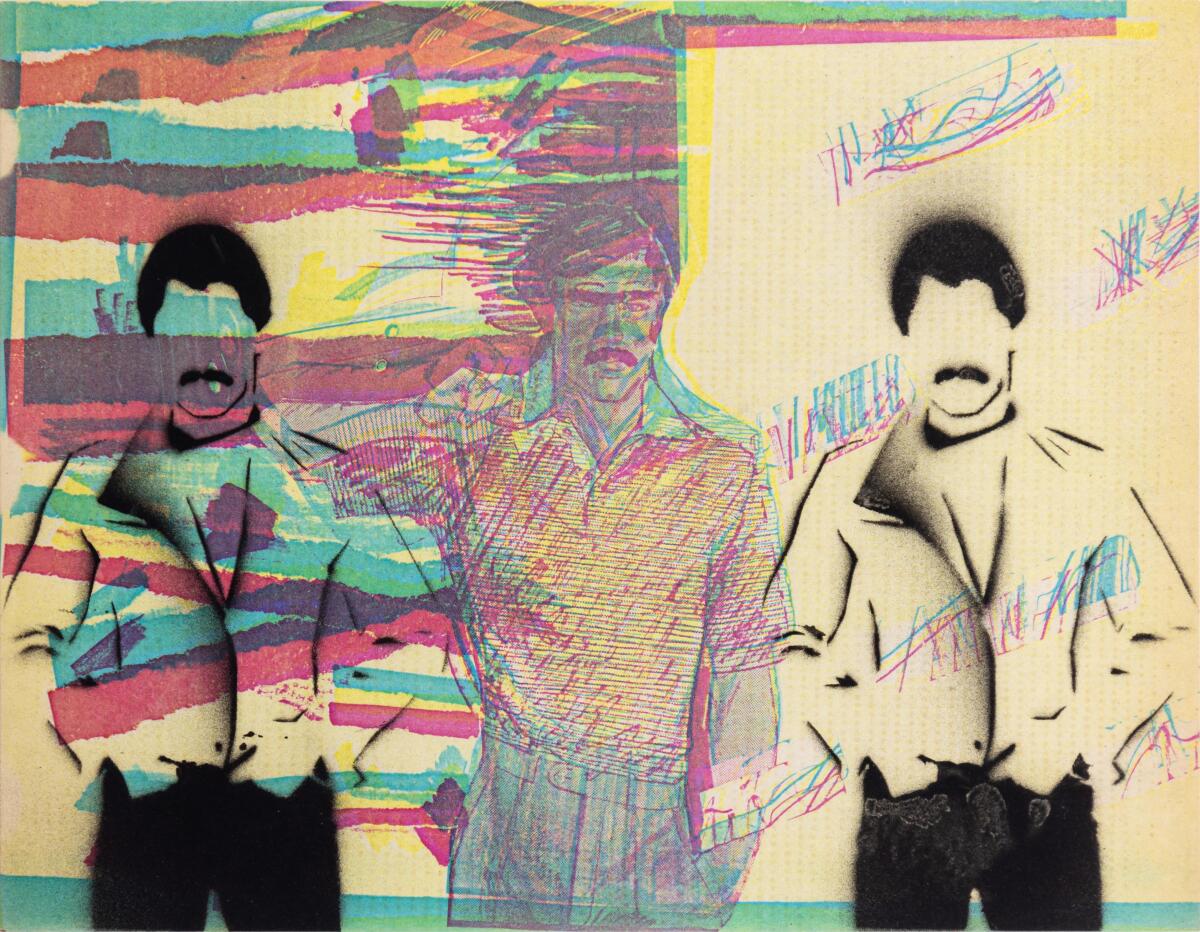
Various juxtapositions in the show also serve as reminders that L.A. institutions still have a lot of work to do in giving work by Chicano artists more thorough consideration (and going beyond the surface veneer of identity).
I was intrigued by the placement of a print by Gilbert “Magu” Luján, which shows figures cruising an imaginary urban landscape of fantastical pyramids, in close proximity to a sculptural installation by Linda Vallejo titled “Pyramid City: Anahuac,” 1980, which features structures fabricated in paper and presented under an acrylic dome.
Together, these pieces harkened back to the imagery of Almaraz’s dream city — and made me think that I’d love to see a show that explores the ways in which architecture, specifically Indigenous architecture, is symbolically deployed in Chicano art.
“L.A. Memo” is a small show. But it’s one that, in combination with some of the smart groupings of work at the Cheech in Riverside, will hopefully help spark many other thoughtful explorations.
“L.A. Memo: Chicana/o Art From 1972-1989” is on view at La Plaza de Cultura y Artes through Sunday.
On and off the stage
For more than two decades, Robert Egan has served as artistic director of the Ojai Playwrights Conference — “a Shangri-la of playwriting,” as described by Times theater critic Charles McNulty. So his planned departure at the end of the year comes as big news. In a conversation with McNulty, he reflected on the organization’s legacy: “We are unashamedly political. ... Not small ‘p’ political. But capital ‘p’ political. We’re looking to work with artists who deeply and passionately meditate on the relationship between individuals and this very complex thing we call social reality.”
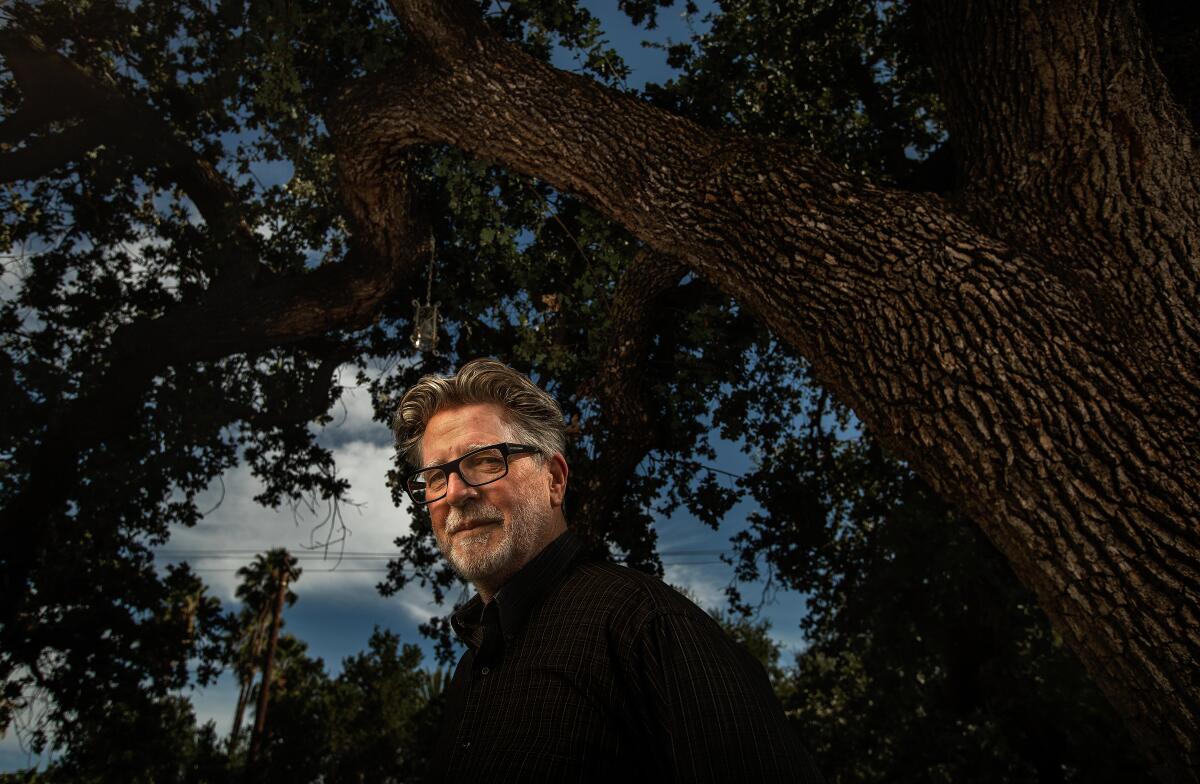
Moisés Kaufman’s “Here There Are Blueberries,” which is having its world premiere at the La Jolla Playhouse, is inspired by the true story of a mysterious photographic album that landed at the U.S. Holocaust Memorial Museum in 2007. Its images were connected to Auschwitz — images not of death but of the camp’s administrators and staff engaged in daily activities, such as calisthenics, playing music and eating blueberries. “The editing hasn’t yet reached its optimal form,” writes McNulty of the play. “But the strength of the work is less in the dramatic writing than in the creation of a contemplative theatrical space.”
“The Prom” has landed at the Ahmanson. That’d be the musical about a pair of badly reviewed actors who try to revive their reputations by embracing a cause: that of a young teen lesbian in Indiana whose prom was canceled to prevent her from going. McNulty has written, in the past, about the original Broadway show and the movie version that appeared on Netflix (starring Meryl Streep and James Corden). Though the musical’s plot is flabby in parts, he was moved by Kaden Kearney’s performance as Emma, the teen at the heart of the story.
McNulty also caught comedian Mike Birbiglia’s new show, “The Old Man and the Pool,” at the Mark Taper Forum. The show finds Birbiglia once again dwelling on the vagaries of his body as his doctor prescribes swimming as a way of contending with his various ailments. “Not since Joan Rivers joked about her gynecological checkups has a comic shared so much medical history,” writes McNulty. The material is “rich” and “refracted through a precise comic mind,” but the pacing feels “stymied” in parts — and more could be made of the sleek swimming pool set.
Enjoying this newsletter? Consider subscribing to the Los Angeles Times
Your support helps us deliver the news that matters most. Become a subscriber.
The Times’ Ashley Lee reports that the staff at the Victory Gardens Theater in Chicago, a major regional theater company, has begun the process of unionization. The group of 16 employees, including front-of-house staff, stagehands and administrators, is represented by three IATSE locals. “It’s the latest move in an ongoing standoff between the storied Chicago institution’s employees and board of directors,” reports Lee, “the latter of whom have drawn criticism for recent decisions regarding its artistic leadership and financial investments.”
Classical notes
Times classical music critic Mark Swed says it may be time for a critical reconsideration of Saint-Saëns, whose work once “represented perceived glib, outdated Romanticism.” The French composer’s reputation has changed over the past quarter of a century, and a presentation of his work led by L.A. Phil associate conductor Paolo Bortolameolli offered an opportunity to dig in. Saint-Saëns “may have loathed French Impressionism and considered Stravinsky’s ‘The Rite of Spring’ the work of a modernist madman,” writes Swed, “but Saint-Saëns is increasingly seen as a kind of radical proto-Postmodernist.”
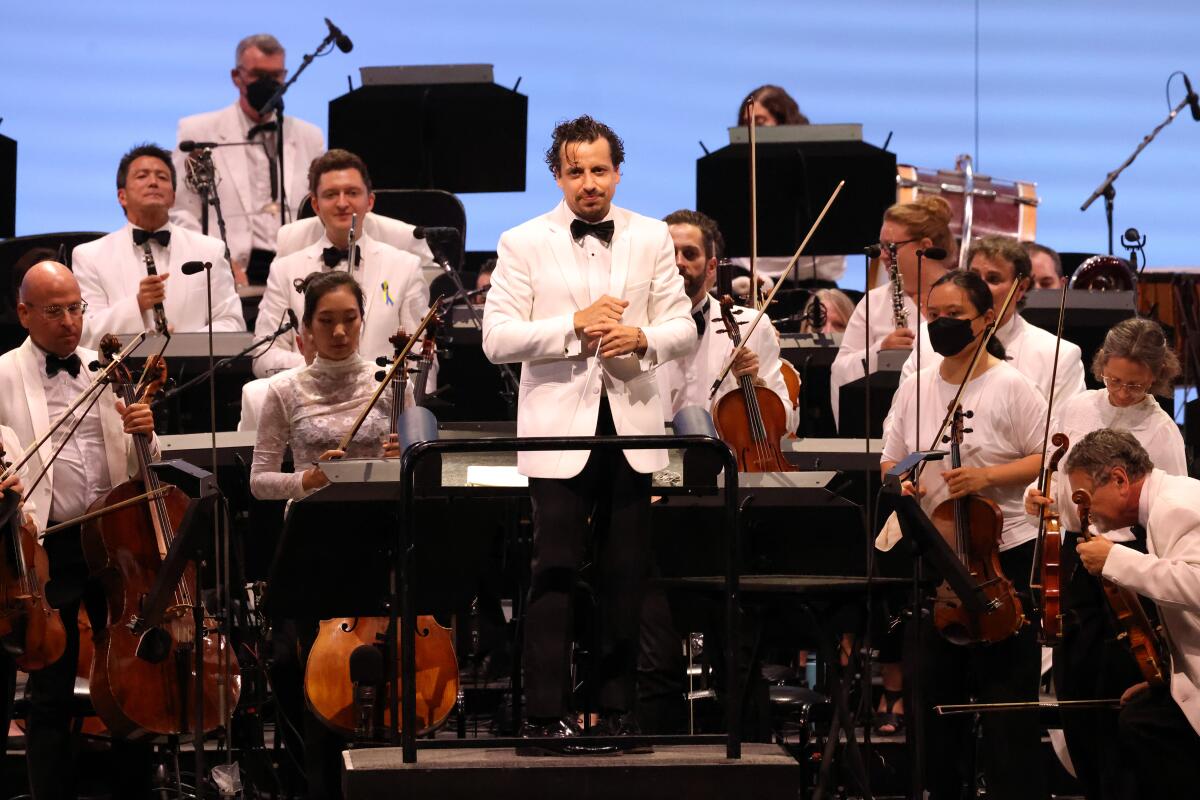
On Tuesday, Ukrainian-born, Finland-based conductor Dalia Stasevska made her directing debut at the Bowl — a performance that had been slated to happen two years ago but was canceled due to the pandemic. There were wow moments (Anna Meredith’s “Nautilus”), reports Swed, and those that took the theatricality up to 11 (Dvorák’s Eighth Symphony). In the latter, a circling helicopter, unfortunately, intruded on a slow movement that had “proved the most interesting.”
In and out of the galleries
Among the final acquisitions made by J. Paul Getty prior to his death in 1976 was “Orpheus and the Sirens,” an important group of terra cotta figures. They will not be in L.A. much longer. After the Manhattan D.A.’s office presented evidence that the pieces had been illegally excavated, the museum announced it would return them to Italy — along with four other objects. “It’s just extremely rare and there’s nothing similar in our collection, or closely similar in any collection,” museum director Tim Potts tells The Times’ Deborah Vankin. “It does leave a hole in our gallery, but with this evidence that came forth, there was no question that it needed to be sent back to Italy.”
Sort of related: The Horniman Museum & Gardens in London has agreed to return a collection of looted Benin Bronzes to the Nigerian government.
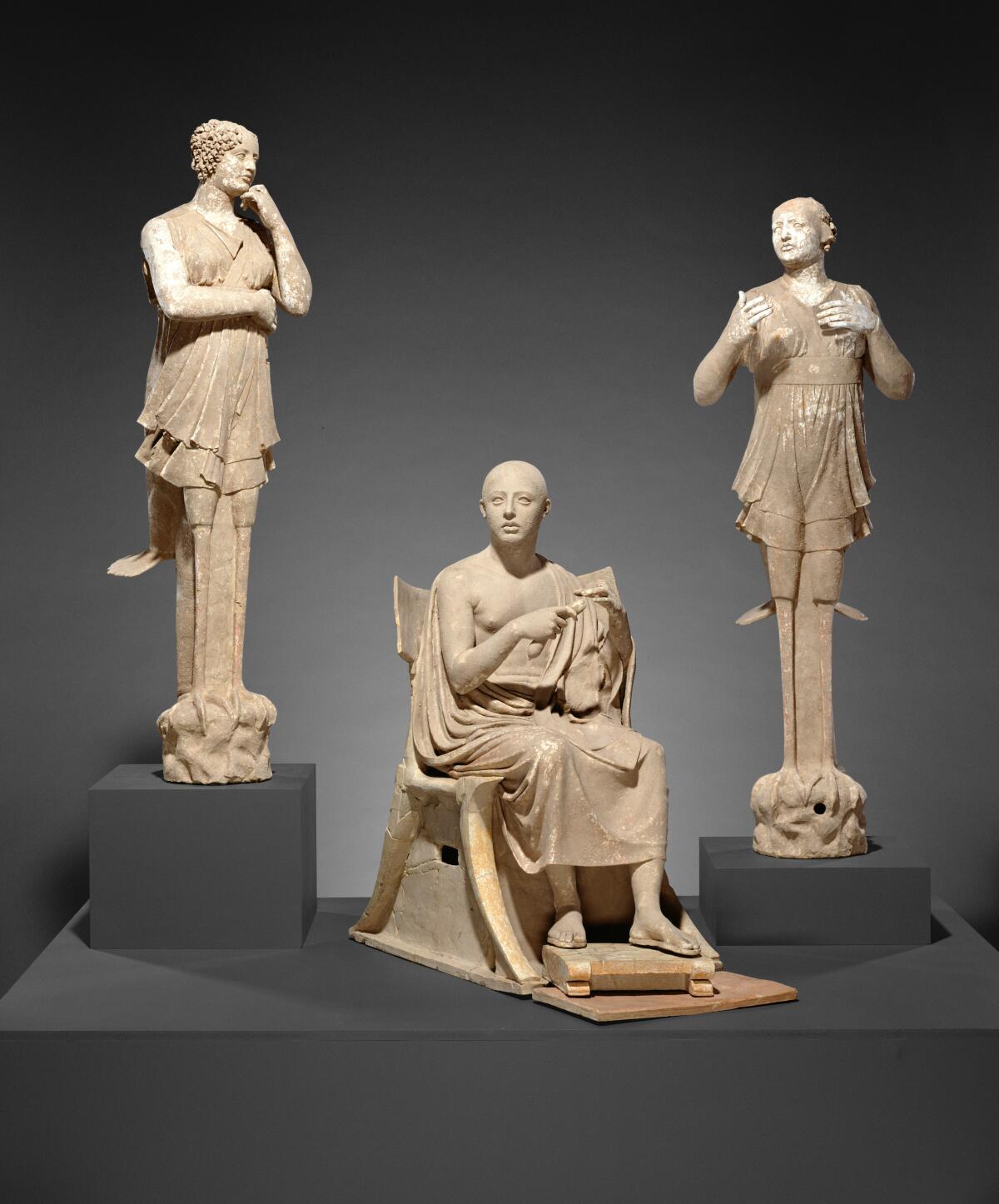
In the past, the USC Pacific Asia Museum in Pasadena seemed more devoted to the works of the past — and even then, it exhibited those framed by a Western lens, writes contributor Sharon Mizota. In recent years, that has changed, with contemporary artists making regular appearances in the galleries. The latest exhibition, “Off Kilter: Power and Pathos,” features three local Asian American artists: Kim-Trang Tran, Sandra Low and Keiko Fukazawa. The show, writes Mizota, attempts to “make sense of current sociopolitical issues, such as aging, gun violence, racism and economic inequality, by filtering them through a highly personal and idiosyncratic lens.”
Essential happenings
Matt Cooper has the nine best bets for the weekend, including a production of “Macbeth” courtesy of the Griffith Park Free Shakespeare Festival, as well as the world premiere of a new ballet, “Seeds of Rain,” by Raiford Rogers Modern Ballet at the Luckman Fine Arts Complex on Saturday.
Moves
Rachel Fine, who heads the Wallis in Beverly Hills, and husband Christopher Hawthorne, chief design officer for the city of Los Angeles and former architecture critic for The Times, are both decamping to Yale University. Fine will take on the role of executive director of the university’s Schwarzman Center, and Hawthorne will teach courses in urban design and journalism.
Passages
Issey Miyake, who as a child survived the atomic bombing of Hiroshima and ultimately went on to become a globally famous fashion designer, known for pleated ensembles that evoked origami, has died at 84. The designer was known for experimentation but also produced items of great simplicity — such as the black turtleneck that became emblematic of Steve Jobs.
Vogue has a good slideshow of celebs wearing his looks.
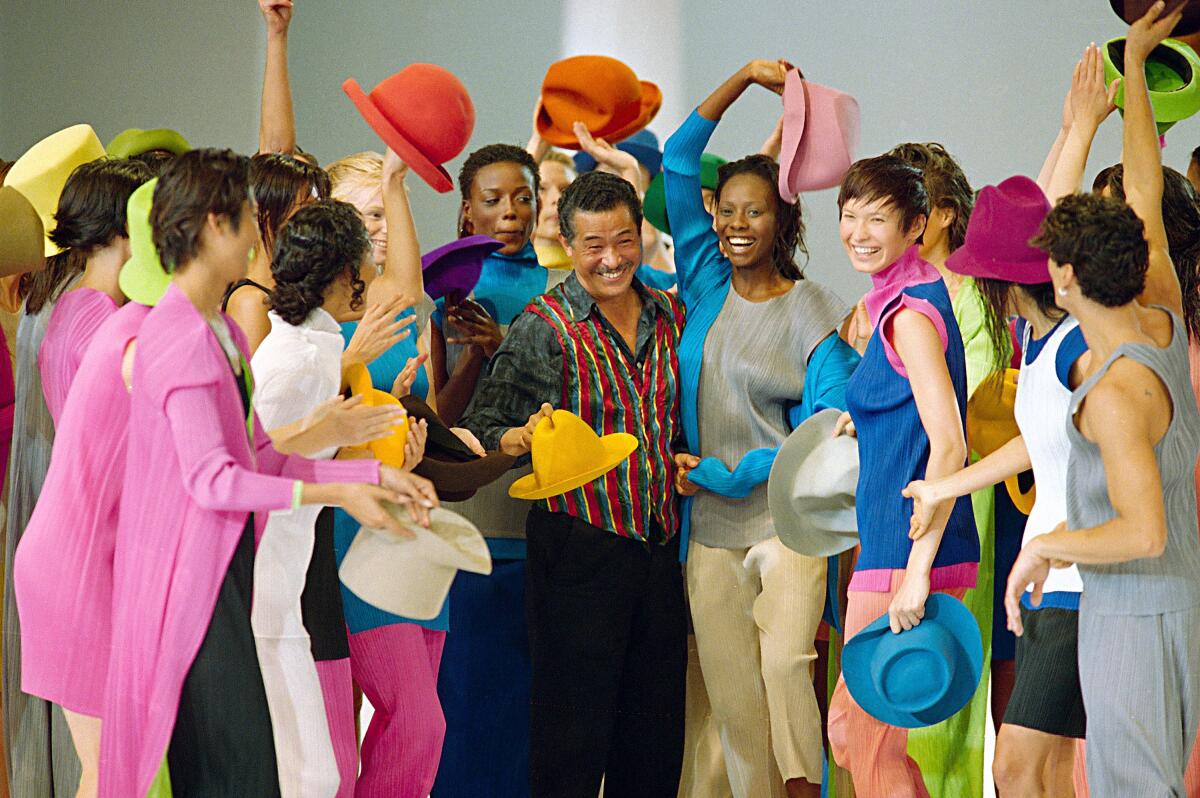
Edward A. Feiner, who served as chief architect of the U.S. government and, over a 35-year career, helped redefine the aesthetics of public agencies, has died at 75.
Plus, as part of its “Overlooked No More” series, the New York Times pens a belated obit for otherworldly performer Klaus Nomi. “His music combined opera, infectious melodies, disco beats, German-accented countertenor vocals and undeniable grandeur,” writes Rachel Felder. “He influenced everyone from the singer-songwriter Anohni to Lady Gaga.”
In other news
— “Don’t let management tell you — labor — what labor should look like.” Some good advice from Yale professor emerita Peggy Deamer in light of the student labor scandal at SCI-Arc.
— A great look at the both-sides politics of the American Institute of Architects.
— Elon Musk has been selling cities literal holes in the ground. Curbed’s Alissa Walker has a look at Musk’s infuriating ideas about urbanism (which of course fly in the face of established fact).
— Colombia’s Francia Márquez, the country’s first Black vice president, is helping redefine fashion.
— I really enjoyed this essay by David Treuer about being the son of parents with conflicting views of the United States: an Austrian father who embraced this country after fleeing the Holocaust and an Ojibwe mother who felt betrayed by it.
— Catching up with Ukraine’s Kyiv City Ballet, now exiled in Paris, where they have been hosted by the Théâtre du Châtelet.
— A show of Western conceptual art at the Tehran Museum of Contemporary Art is drawing crowds.
— An interesting Substack dispatch from Lawrence Weschler digs into the work of Brazilian artist Cildo Meireles, as well as a pair of film shorts that are all about seeing.
— Composer and writer Mary Rodgers’ memoir sounds like a ton of dishy fun.
And last but not least ...
On ode to manual transmission. (Because you’ll have to pull my stick shift out of my cold dead hands.)
The biggest entertainment stories
Get our big stories about Hollywood, film, television, music, arts, culture and more right in your inbox as soon as they publish.
You may occasionally receive promotional content from the Los Angeles Times.




